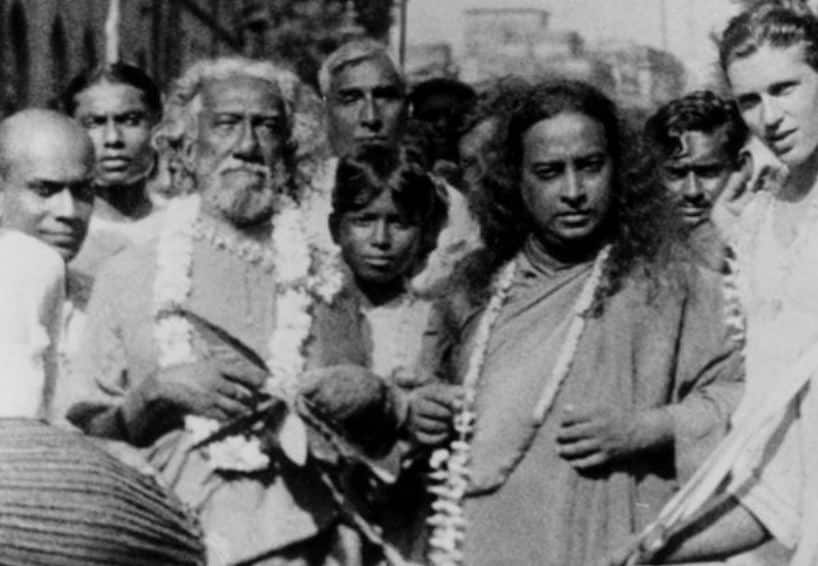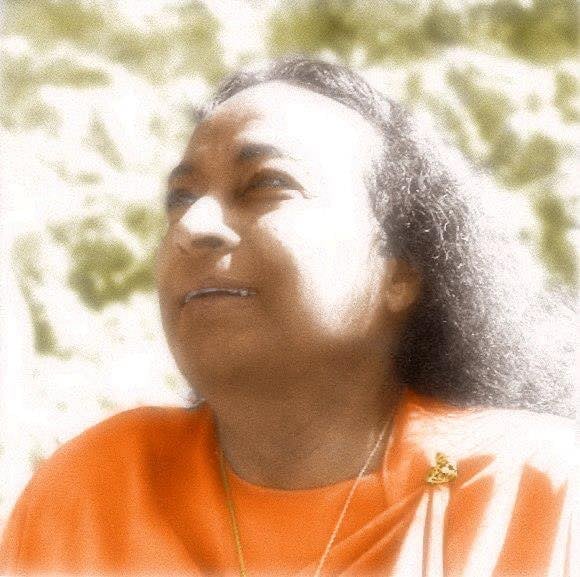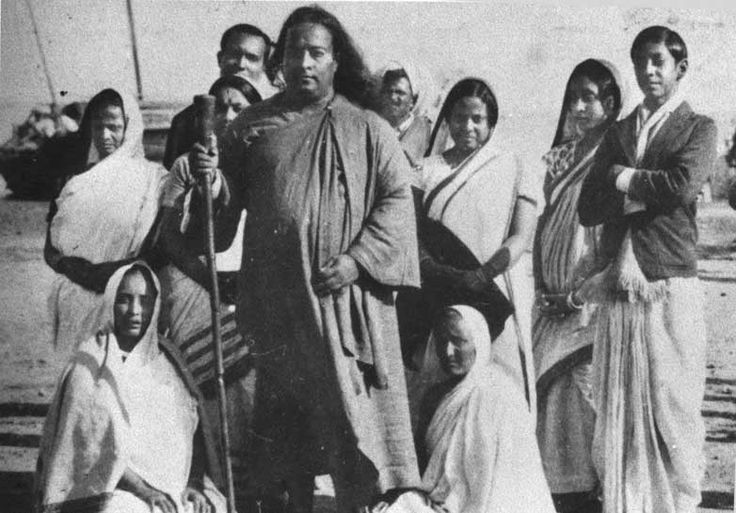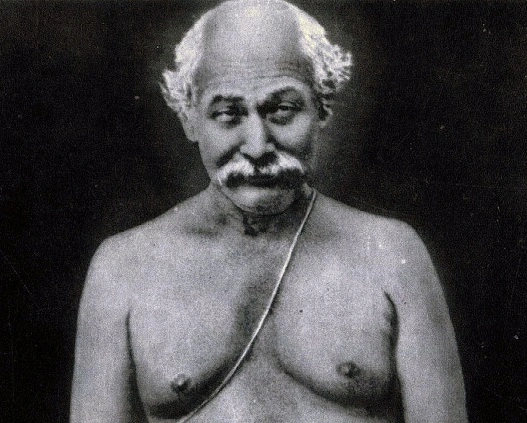Swami Sri Yukteswar: The Jnanavatar and Guru of Paramahansa Yogananda
Swami Sri Yukteswar Giri (1855-1936) remains one of the most influential figures in modern spiritual history, recognized by the Self-Realization Fellowship as Jnanavatar – the “Incarnation of Wisdom.” As the guru of Paramahansa Yogananda, Sri Yukteswar played a fundamental role in disseminating Kriya Yoga teachings in the West, establishing a bridge between Eastern spiritual traditions and Western scientific mentality.
Birth and Early Years
Swami Sri Yukteswar was born on May 10, 1855, in Serampore, Bengal, India. From early on, he demonstrated a natural inclination toward spiritual studies and a deep understanding of sacred scriptures. His education included both traditional Indian learning and knowledge of modern sciences, preparing him for his future mission of unifying Eastern spiritual traditions with Western knowledge.
Initiation with Lahiri Mahasaya
Sri Yukteswar was a disciple of Lahiri Mahasaya and attained the spiritual stature of Jnanavatar, or incarnation of wisdom. Under Lahiri Mahasaya’s guidance, he received initiation in Kriya Yoga, the ancient scientific meditation technique that had been revived by Mahavatar Babaji in the 19th century.
The guru-disciple relationship between Lahiri Mahasaya and Sri Yukteswar was marked by profound reverence and dedication. Lahiri Mahasaya recognized in young Sri Yukteswar not just a devoted disciple, but someone destined to play a crucial role in propagating sacred teachings for future generations.
The Ashram in Serampore
Sri Yukteswar established his main ashram in Serampore, where he spent most of his spiritual life dedicated to teaching and guiding disciples. This ashram became an important center of spiritual learning, where future masters, including Paramahansa Yogananda, received their fundamental training.
The Transformative Encounter with Mahavatar Babaji
One of the most significant moments in Sri Yukteswar’s spiritual life occurred in 1894, when he had a divine encounter with Mahavatar Babaji, the guru of his own guru. Sri Yukteswar recognized that a synthesis of the East’s spiritual heritage with Western science and technology would do much to alleviate the material, psychological, and spiritual suffering of the modern world.
During this sacred encounter, Babaji made a specific request to Sri Yukteswar: “At my request, Swamiji,” Babaji said to him, “will you not write a short book on the underlying harmony between Christian and Hindu scriptures? Their basic unity is now obscured by men’s sectarian differences. Show by parallel references that the inspired sons of God have spoken the same truths.”
“The Holy Science” – His Monumental Work
Responding to Mahavatar Babaji’s call, Sri Yukteswar dedicated himself to the task of demonstrating the fundamental unity between Christian and Hindu traditions. Sri Yukteswar recounted: “In the quiet of night I busied myself over a comparison of the Bible and the scriptures of Sanatan Dharma. Quoting the words of the blessed Lord Jesus, I showed that his teachings are in essence one with the revelations of the Vedas. Through the grace of my paramguru, my book, The Holy Science, was finished in a short time.”
“The Holy Science” became a revolutionary work that clearly and systematically presents the correspondences between the teachings of Jesus Christ and those of Bhagavan Krishna. The book demonstrates how both traditions point to the same universal spiritual truths, merely expressed in different cultural languages.
Main Themes of “The Holy Science”
Sri Yukteswar’s work addresses several fundamental themes:
1. Unity of Religions: The book demonstrates that, in their essence, all great religions teach the same fundamental spiritual principles.
2. Cosmic Cycles: Sri Yukteswar presents a detailed explanation of yugas (cosmic ages) and how they influence humanity’s spiritual development.
3. The Science of Meditation: The work explains the scientific aspects of meditation and how it can be practiced to achieve Self-realization.
4. Spiritual Evolution: The book traces the path of spiritual development from initial stages to complete God-realization.
His Role in the Self-Realization Fellowship Spiritual Lineage
The spiritual lineage of SRF/YSS consists of these two great avatars and a line of exalted masters of contemporary times: Mahavatar Babaji, Lahiri Mahasaya, Swami Sri Yukteswar, and Paramahansa Yogananda (last in the line of SRF/YSS Gurus).
Sri Yukteswar occupied a unique position in this sacred lineage. He served as the vital bridge between Lahiri Mahasaya and Paramahansa Yogananda, carefully preparing his main disciple for the worldwide mission that awaited him in the West.
Divine Preparation for His Mission
During his 1894 encounter, Mahavatar Babaji had informed Sri Yukteswar: “You, Swamiji, have a part to play in the coming harmonious exchange between Orient and Occident. Some years hence I shall send you a disciple whom you can train for yoga dissemination in the West. The vibrations there of many spiritually seeking souls come floodlike to me. I perceive potential saints in America and Europe, waiting to be awakened.”
Sri Yukteswar’s Ashrams
Besides his main ashram in Serampore, Sri Yukteswar also established a seaside retreat in Puri, Odisha. This secondary ashram in Puri was particularly significant in the history of Yogoda Satsanga Society of India, serving as a place of retreat and deep meditation for the master and his disciples.
The Meeting with Paramahansa Yogananda
When young Mukunda Lal Ghosh (future Paramahansa Yogananda) arrived at Sri Yukteswar’s ashram, the wise master immediately recognized in him the disciple promised by Babaji. After relating this, Sri Yukteswar told Yoganandaji, “My son, you are the disciple that, years ago, Babaji promised to send me.”
Rigorous Training
Sri Yukteswar was known for his extremely rigorous and disciplined training methods. Yogananda attributed the small number of Sri Yukteswar’s disciples to his rigorous training methods, which Yogananda said “cannot be described as other than drastic.”
This intensive training had a clear purpose: to prepare Yogananda not only spiritually, but also intellectually and emotionally for the challenging mission of bringing sacred Eastern teachings to a skeptical and scientifically oriented Western audience.
Distinctive Characteristics of His Teaching
Synthesis Between East and West
Sri Yukteswar pioneered in recognizing the need to present ancient wisdom in a way that would be accessible and understandable to the modern mentality. He understood that Eastern spirituality needed to be translated not just linguistically, but also culturally, to have real impact in the West.
Scientific Approach to Spirituality
One of the most notable aspects of Sri Yukteswar’s teachings was his scientific approach to spirituality. He presented spiritual principles as natural laws that could be tested and verified through direct experience, rather than merely accepted on faith.
Discipline and Spiritual Discrimination
Sri Yukteswar emphasized the importance of rigorous discipline and spiritual discrimination (viveka). He taught that genuine spiritual progress requires not only devotion, but also clear intellectual discernment and constant practice.

The Legacy Through Paramahansa Yogananda
Under Sri Yukteswar’s spiritual training and discipline, Sri Yogananda was prepared to begin his worldwide mission in the West. Sri Yukteswar named Paramahansa Yogananda sole heir to his spiritual mantle and ashram properties.
Foundation of Self-Realization Fellowship
Sri Yukteswar’s preparatory work with Yogananda culminated in the founding of Self-Realization Fellowship in 1920. Paramahansa Yogananda wrote in Autobiography of a Yogi: “The founding in the West of a Self-Realization Fellowship organization, a ‘hive for the spiritual honey,’ was a duty enjoined on me by Sri Yukteswar and Mahavatar Babaji.”
The establishment of SRF represented the fulfillment of a divine plan that had been set in motion decades earlier. Sri Yukteswar had carefully prepared his disciple not just for individual spiritual attainment, but for the creation of an institution that could preserve and disseminate the sacred teachings for generations to come. The organizational structure, teaching methods, and spiritual practices of SRF all bore the imprint of Sri Yukteswar’s wisdom and foresight.
Before Paramahansa Yogananda’s departure for America in 1920, Sri Yukteswar ensured that his disciple understood both the letter and spirit of the teachings. This preparation included not only the technical aspects of Kriya Yoga but also the deeper understanding of how to adapt these ancient practices for Western students while maintaining their essential purity and effectiveness.
Lasting Impact
The impact of Sri Yukteswar’s teachings through Yogananda was extraordinary. Millions of people around the world were introduced to the principles of Kriya Yoga and scientific meditation through the organization that was established following Sri Yukteswar’s instructions and preparation.
His Unique Spiritual Philosophy
The Importance of Direct Realization
Sri Yukteswar is an Indian sage who experienced truth before preaching it. He did not have merely theoretical knowledge of what he taught his disciples, but rather, he realized and assimilated all the truth he possessed in his consciousness, making it his own, before transmitting it to his disciples.
The Balance Between Wisdom and Compassion
Sri Yukteswar exemplified the perfect balance between jnana (wisdom) and karuna (compassion). Although he was rigorous in his teaching methods, his motivation always came from deep and genuine love for his disciples and the spiritual welfare of humanity.
Scripture Interpretation
Sri Yukteswar had a unique ability to interpret sacred scriptures from various traditions, revealing their deeper meanings and practical applications for modern seekers. His commentaries on both Hindu and Christian texts continue to illuminate serious students of spirituality.
Cosmic Calendar and Yugas
One of his most distinctive contributions was his reinterpretation of the yuga system (cosmic ages). Sri Yukteswar presented a more optimistic view of cosmic cycles, suggesting that humanity was entering an age of greater spiritual illumination, rather than being trapped in a dark age for thousands of years.
Spiritual Astrology
Sri Yukteswar also brought unique insights about astrology, not as a system of divination, but as a science that could help in understanding cosmic influences on human spiritual development.
The Transition and Mahasamadhi
Swami Sri Yukteswar entered mahasamadhi on March 9, 1936, during Paramahansaji’s visit to India after fifteen years in America. His departure marked the end of an era, but also the beginning of a new phase in the dissemination of sacred teachings through the prepared work of his main disciple.
Posthumous Appearance
One of the most extraordinary events related to Sri Yukteswar was his physical appearance to Yogananda after his death, as detailed in “Autobiography of a Yogi.” This appearance not only consoled the grieving disciple but also provided profound insights into the nature of life after death and the continuity of consciousness.
Contemporary Relevance of His Teachings
In our current era of religious and cultural tensions, Sri Yukteswar’s teachings about the fundamental unity of all religions are more relevant than ever. His respectful yet clear approach to demonstrating shared truths between different traditions offers a model for constructive inter-religious dialogue.
Scientific Spirituality
Sri Yukteswar’s scientific approach to spirituality particularly resonates with modern seekers who wish to combine rational investigation with spiritual experience. His teachings show that there is no inherent conflict between science and spirituality when both are properly understood.
Integral Development
Sri Yukteswar emphasized the integral development of the human being – physical, mental, and spiritual. This holistic approach is in perfect harmony with contemporary understandings about wellness and personal development.
The Eternal Jnanavatar
Swami Sri Yukteswar Giri (1855–1936), Jnanavatar of India, “Incarnation of Wisdom”; guru of Paramahansa Yogananda, and paramguru of Kriyaban members of Self-Realization Fellowship, continues to inspire and guide spiritual seekers worldwide through his eternal teachings.
His legacy is not limited to the teachings he directly transmitted, but extends through the vast network of students and practitioners who have been touched by the teachings he helped preserve and disseminate. Self-Realization Fellowship, built upon the foundations he established through his preparation of Paramahansa Yogananda, continues to serve millions of seekers worldwide.
He is one of six Masters who had the divine mission of disseminating sacred teachings and scientific spiritual techniques through Self-Realization Fellowship. His specific part in this sacred mission – preparing Yogananda to bring the teachings to the West – was fulfilled with incomparable mastery.
Swami Sri Yukteswar remains a luminous bridge between ancient spiritual traditions and contemporary spiritual needs, showing that eternal wisdom can be presented in ways that are both authentic to original traditions and relevant to modern seekers. His example of spiritual rigor combined with universal compassion continues to illuminate the path for all those seeking the realization of supreme truth.
Through “The Holy Science” and the living legacy of his teachings preserved through Self-Realization Fellowship, Swami Sri Yukteswar continues to guide humanity toward understanding the fundamental unity that underlies all apparent differences, thus fulfilling his eternal mission as Jnanavatar – the Incarnation of Divine Wisdom.






